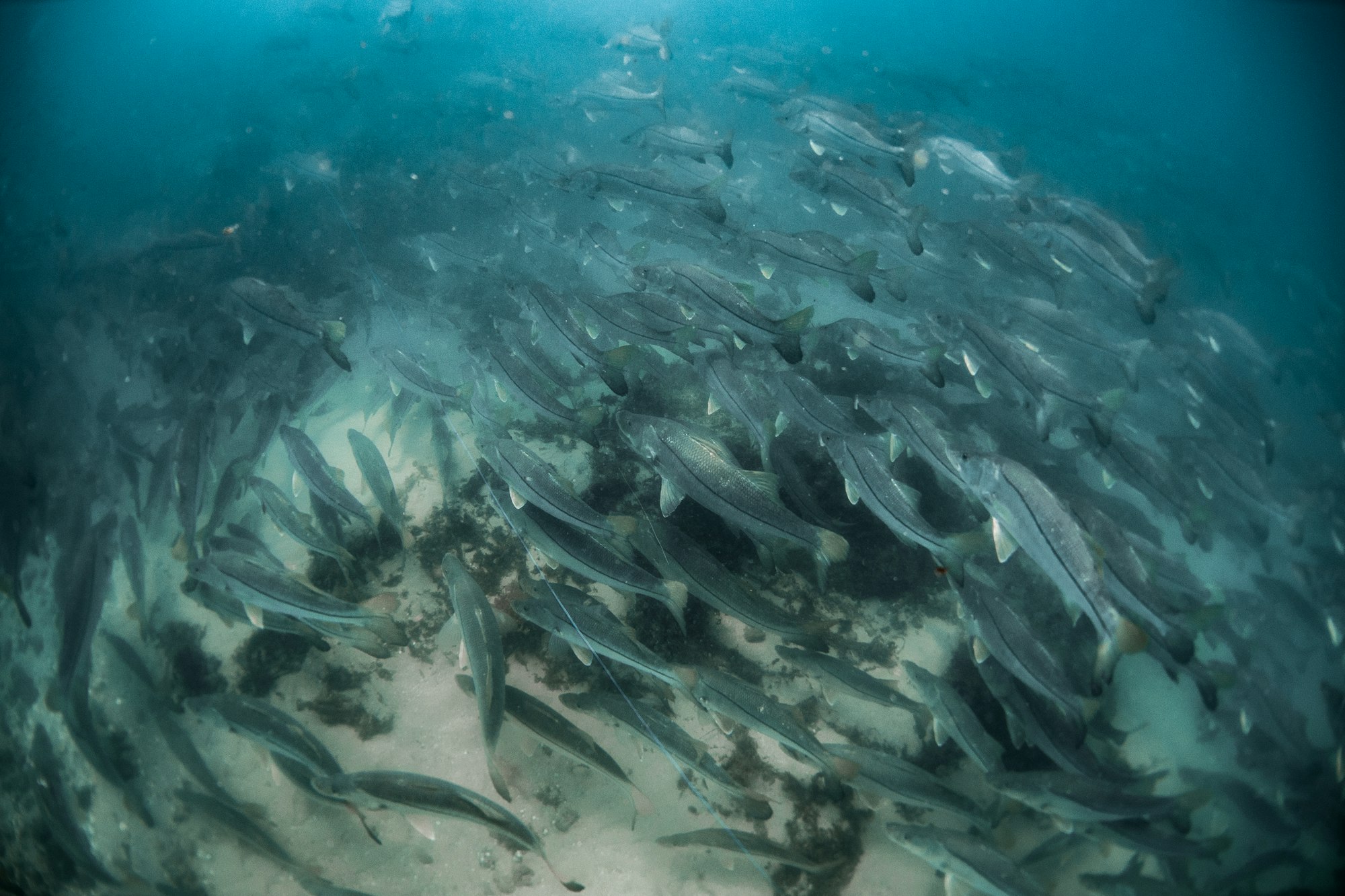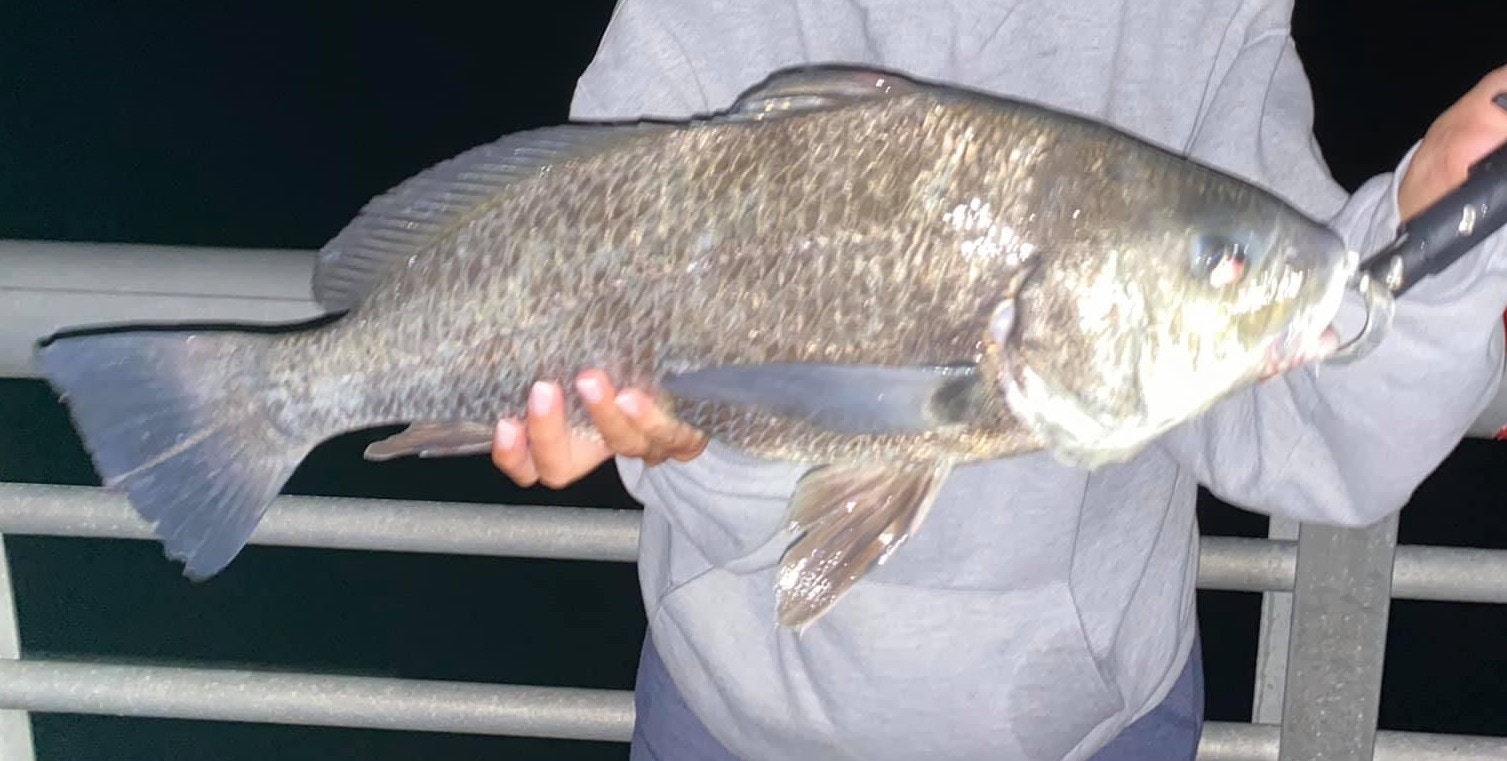Part 4: The Secret Lives of Sebastian Inlet's Fish

Estuarine-Ocean Fishery Migrators
Part Four of a Series
Welcome back! In the first segment of our Sebastian Inlet fish series, we studied the groupers, snappers and bull sharks — collectively categorized as “reef fish fishery migrators” — that use the seagrass and mangrove nurseries to mature before returning to ocean spawning sites. We then examined resident reef fish that spend their entire lives dwelling beneath the jetties and rock structures around Sebastian Inlet. In part three, we looked at “estuarine feeders” that migrate through the inlet to feed in the Indian River Lagoon.
This time, we shine a light on a group of fish that regularly migrate between Sebastian Inlet and the Indian River Lagoon and spawn in both the Atlantic Ocean and the lagoon’s shallow estuarine waters. This group includes the snook, red drum or “redfish,” black drum, menhaden and striped mullet. World renowned biologist, Dr. Grant Gilmore, our chief source for this series, calls this group “estuarine-ocean fishery migrators.”

Any angler worth his or her salt will tell you that the snook (Centropomus undecimalis) and redfish (Sciaenops ocellatus) are two of the most renowned game fish of Sebastian Inlet. Gilmore surmises that the creation of this manmade waterway helped shape the evolution of some, if not all, of the species in this migrator group.
“These fish usually migrate between the lagoon and ocean routinely,” Gilmore says. “Without inlets, many of these fish evolved to spawn in the lagoon. Since inlets have been constructed, I think they spawn in both the ocean and the lagoon now. All these species routinely use the lagoon as a nursery for their larvae and juveniles.”
The inlet’s impact on red drum spawning rituals is a prime example, says Gilmore. He knows a thing or two about red drums, having spent three years mapping their spawning grounds in the Indian River Lagoon.

“The only place in Florida that I know of that red drum spawn inside (the lagoon) is Cape Canaveral,” he says. “All red drum lagoon spawning locations are 30 to 50 miles from the nearest ocean inlet, Sebastian or Ponce de Leon.”
Why do red drum spawn in the Indian River Lagoon? “That’s because the inlet hadn’t been created yet,” Gilmore says. Sebastian Inlet is manmade. Settlers first attempted cutting an inlet at its current location in the 1880s. “The fish had to spawn even if there was no inlet to the sea. No spawn, no red drum.”
(historic photo of inlet being breached, perhaps one of the 1918 photos)
“Now that the inlet’s here, the red drum, black drum, whiting and menhaden all spawn in the Indian River Lagoon, miles from the inlet, but now ocean migration can occur, too. The creation of the inlet did that.”
After these fish spawn in the ocean, their offspring return to the lagoon to feed, growing rapidly in size, Gilmore says.
Snook are arguably the rock stars of game fish at Sebastian Inlet. The snook, with its protruding lower jaw and distinct, black, lateral line on its sides, is the mascot of the popular Indian River Lagoon license plate. These feisty fish spawn near reefs, wrecks and near the jetties. Their eggs are the size of pinheads. They hatch in less than 20 hours and larvae settle in the shallow waters of the Indian River Lagoon.

“Snook are ravenous predators,” Gilmore says. “They’ll eat each other. The big spine that the snook lug around? That’s to keep young snook from being eaten by mom and dad.”
Juvenile snook hide out in mangroves and in the nearby Sebastian River. They like shallow places back in the mangroves where they can eat mosquitofish and grow quickly.
“In one three-hour set, we caught 1,500 one-inch, juvenile snook in Jack Island Preserve State Park,” he says. “That particular location was as good as gold. There are very specific locations where the snook want to go….shallow, protected waters.”
nook will begin eating other fish when they’re about one-half inch in size. They begin leaving the mangroves by the time they reach six inches and head out to the lagoon.
The shoal side of the inlet (Indian River Lagoon) provides the ideal habitat for juvenile snook: shallow water, mangrove prop roots and seagrass beds, he says.
“I try to get across to the fishermen,” Gilmore says. “You have to know where your fish come from. You really have to care because it is water quality and habitat that keeps them alive.

Sebastian Inlet District’s commissioners share Gilmore’s philosophy. In 2007, following a realignment of the inlet channel, the District was required to monitor seagrass in the inlet flood shoals for five years. The Commission chose to continue biological monitoring beyond the permit requirement as part of its commitment to protecting this sensitive habitat.
“Because we were monitoring the flood shoals prior to the 2011 algal blooms that impacted much of the Indian River Lagoon, we can say with certainty that the seagrass beds near the inlet have held their own rather well,” said District Commissioner Beth Mitchell. “We’re also ensuring that our data is compatible with data collected by other agencies, such as St. Johns River Water Management District. Data sharing can provide scientists with a more robust understanding of seagrass trends throughout the estuary. "
In our final chapter of this series, we’ll visit the lower rung of the food chain. These fish and invertebrates include pinfish, pigfish, mojarras, grunts, sardines and anchovies. They may be small but they support fisheries by feeding all the top predators.
Who we are: Created as an independent special taxing district in 1919 by special act of the Florida State Legislature, the Sebastian Inlet District was chartered to maintain the navigational channel between the Atlantic Ocean and the Indian River. The Sebastian Inlet District is responsible for bypassing sand that migrates into the inlet system to downdrift beaches per the Florida Beach & Shore Preservation Act, and conducts periodic dredging, channel maintenance, sand bypass and beach renourishment projects. Other critical functions include erosion control, emergency beach and dune repair, shoreline stabilization and inlet infrastructure maintenance, public safety in navigation, and environmental monitoring and protection. The Sebastian Inlet District routinely collaborates with marine scientists to conduct biological monitoring of the critically important habitats surrounding the inlet that support a broad range of different species.
Published on December 27, 2023
By Ed Garland
Public Information Associate
Sebastian Inlet District



